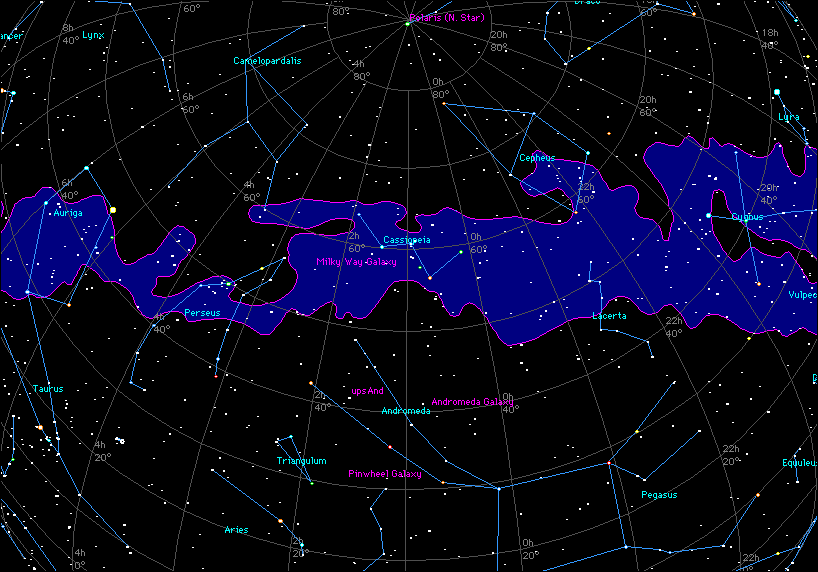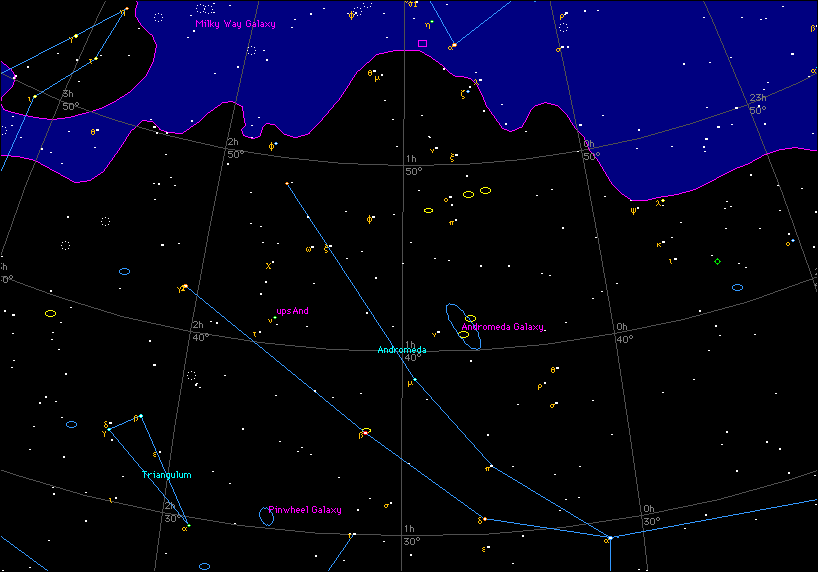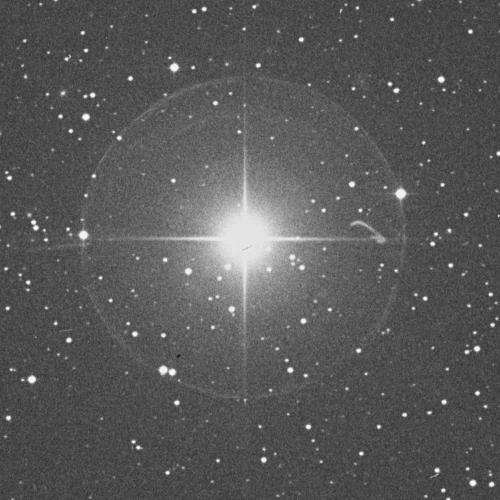The Constellation Andromeda
A General View (the star upsAnd is labeled)
The constellation Andromeda is a autumn constellation, visible in the Northern
Hemisphere from June through February. The stellar coordinates of the star
Upsilon Andromedae are 01:37 right ascension, and +41:24 degress in
declination. The star, similar to our own Sun, is bright enought to be
seen with the unaided eye on a clear, dark night. It is also fairly close by,
in astronomical terms, at a distance of 44 light years (a light year is the
distance light travels in one year, or 5.9 trillion miles).

A Detailed View (the star upsAnd is labeled)

Bright stars in each constellation are named by a letter from the greek
alphabet according to their apparent brightness.
An image of the star Upsilon Andromedae
(click on the image for a wider field view)
The newly discovered planets are not able to be seen, because of the
overpowering brightness of the star and the proximity of the planets to it.
There is no current technology which would allow us to image these planets.
Perhaps in the coming years that will change.

or click here for an insanely large image (2.5MB!).
Images of the star upsAnd are from the Digital Sky
Survey (DSS) and/or Aladin/Simbad.
The physical parameters of the star  Andromedae are
(from the scientific literature):
Andromedae are
(from the scientific literature):
| R.A.: |
01:36:48.527 |
| Dec.: |
+41:24:38.71 (2000.0) |
| Vis Mag.: |
4.09 |
| aka: |
HD9826, HR458, HIP7513 |
| Spectral Type: |
F8 V |
| T(eff): |
~ 6100 K |
| Parallax: |
~ 74.25 mas |
| Distance: |
~ 43.93 light years (13.5 pc) |
| Luminosity: |
~ 3.0 Lsun |
| Age: |
~ 2.6 Gyr |
| Mass: |
~ 1.3 Msun |
| P(rotation): |
< 12 days |
 There is more on the AFOE's planet detection
program.
There is more on the AFOE's planet detection
program.
___________________________________________
Adam Contos
(acontos@cfa.harvard.edu)
Last modified: Thu Apr 15 13:46:58 1999



 There is more on the AFOE's planet detection
program.
There is more on the AFOE's planet detection
program.